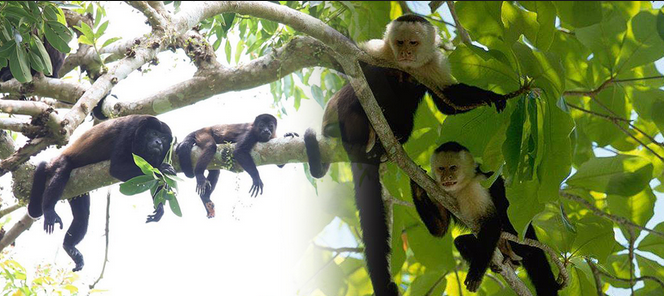David Loe continues his story of travel to Panama
Last week I wrote about the pleasure of departing on a cruise from Southern California. The itinerary I selected is a Panama Canal cruise that started in Los Angeles and concludes in Florida.
Now a week later our ship is actually ready to transit the famed canal after stops in Guatemala, Costa Rica, and the country of Panama itself. While in Panama yesterday a number of us from the cruise ship boarded small 23-passenger motorboats and explored the edge of the dense rainforest that borders the canal. We spotted several varieties of Central American monkeys as well as crocodiles sunning themselves on the shore.
A large section of the Panama Canal in not a narrow channel as you might expect, but instead an enormous man-made lake. Gatun Lake was created in 1913 by damming a local river.
The lake provides the water that operates the canal’s locks as well as drinking water for several major cities in Panama. It surprised me to think you can go motorboating and even fishing in the Panama Canal, but indeed you can. It was quite a sight to see towering container ships transiting from one ocean to another passing our tiny motorboats while we puttered around the shoreline.
Today it is our turn to be the big fish in the canal as we enter the 48-mile passage. The Island Princess began the transit at 6:30 a.m. just a few minutes before the sun popped out of the eastern sky. It will take us about eight hours to complete the process using the lifting power of the water in three locks to get us up to lake level, and then three locks where the water drains to return us to sea level on the Atlantic side. Our total elevation gain will be 85 feet.
It all sounds so simple. In little more than the time it takes cruise ship passengers to down two more dazzling buffets, their vessel has gone from the Pacific to the Atlantic. But if you ever take this voyage, do yourself a favor and read the fascinating history of this project — truly one of mankind’s greatest accomplishments, but at the unbelievable cost of 25,000 worker’s lives.
Out transit is through the old canal locks built just over 100 years ago. The new “canal” you may have been reading about utilizes jumbo locks for ships that cannot squeeze into the older ones.
If you decide to book this cruise at some time be sure to book a balcony cabin. It’s a great vantage point for the canal passage. And, unlike on an Alaskan cruise, in these tropical climes, you’ll make daily use of it as a lounging location. Tip: book a port-side cabin for maximum shade on your balcony both in the Pacific and for the morning portion of your transit of the canal.
Temperatures in the canal and nearby ports were in the mid-80s in February with a modest humidity level. All in all very comfortable for this part of the world … especially in the shade and while the ship is moving. We’ve seen very little rain as this is the dry season.
We concluded our transit of the canal in the mid-afternoon. All in all a pleasant and, thanks to a knowledgeable port lecturer who gave us a running commentary, an educational way to spend a day on a cruise ship.
David Loe was the co-owner of a travel business in Ventura County for 25 years. His column appears monthly. He welcomes your feedback at davidloe@sbcglobal.net
